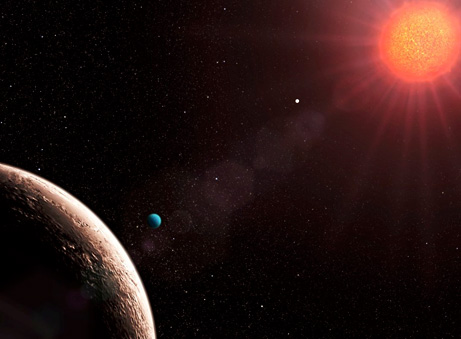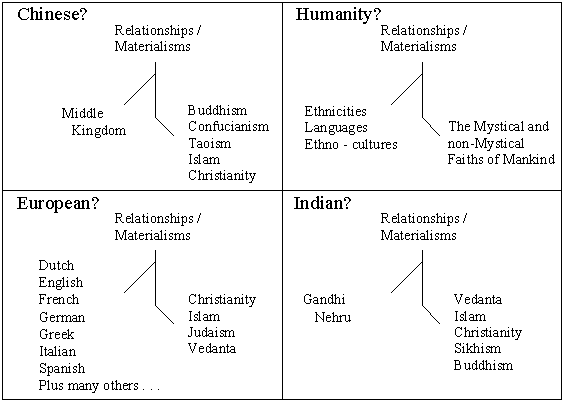Earthlike exoplanets
Gliese 581 d - a water world candidate
Gliese 581 e - lightest smallest so far

|
This
artists conception shows planets orbiting
the red dwarf star Gliese 581 with the
newly
discovered planet, Gliese 581 e, in the left foreground and Gliese 581 d at a distance.
| |
On Tuesday 21 April 2009 details were released, during the European Week of Astronomy and Space Science then
being held at the University of Hertfordshire (and in a paper submitted to the journal Astronomy and Astrophysics),
of Gliese 581 e, which, at 1.9 times the size of the earth in terms
of mass
is the lightest exoplanet to be fully recognised as being discovered so far.
By April 2007 some 227 exoplanets had been discovered by various astronomers and by April 2009 some 350 such exoplanets
were known of.
Almost all exoplanets discovered to date have been large gas giants each with several times
the mass of the Earth.
Although the Gliese system is all of 20.5 light-years, (that is 118,000,000,000,000 miles), from Earth, nevertheless in
astronomical terms Gliese 581, a "Red Dwarf" star in the constellation
Libra, is one of our near neighbours being the 87th closest known star system to our own Sun.
In April 2007 astronomers working with the European Southern Observatory in La Silla in the Chilean Andes
made public their discovery of three exoplanets Gliese 581 b, Gliese 581 c and Gliese 581 d, orbiting Gliese 581,
(the "a" identifier being reserved to avoid confusion with the star itself),
and estimated these three exoplanets as being of fifteen to seventeen earth masses
in the case of "b", five earth masses in the case of "c", and with Gliese 581 d being of some seven earth masses.
The same team have now discovered the existence of another exoplanet in the "Red Dwarf" star Gliese 581 system,
Gliese 581 e,
and the availability of more data has enabled them to place Gliese 581 d in a so called
habitable zone, or goldilocks zone, where climatic conditions are neither too hot nor too cold and with the added
possibility of Gliese 581 d also being a serious water world candidate as it appears to complete its entire orbit,
which is estimated at taking 66.8 days, at a distance from this relatively cool star which locates the planet within
a zone where water could remain liquid!
|
|


